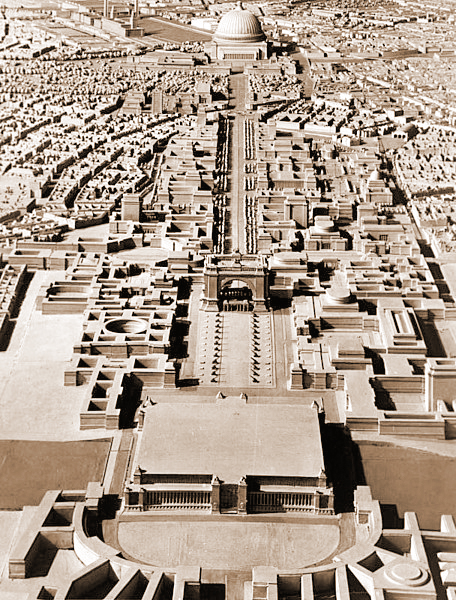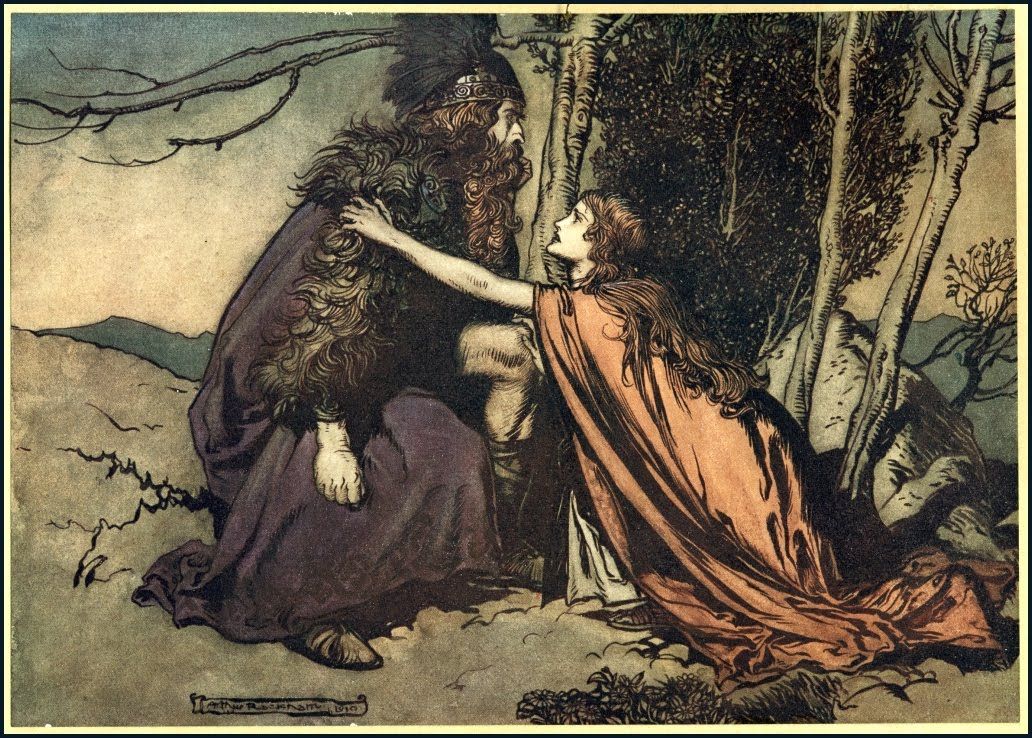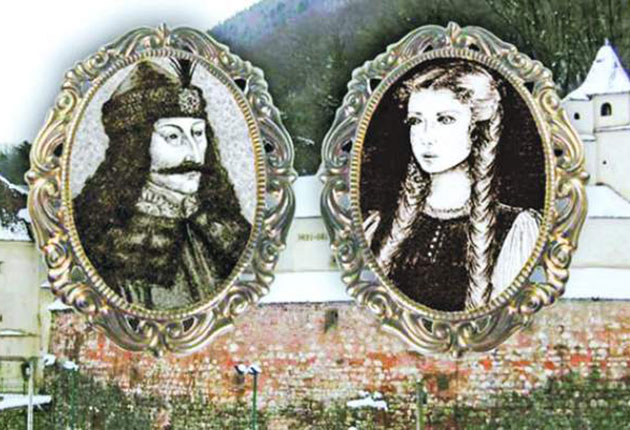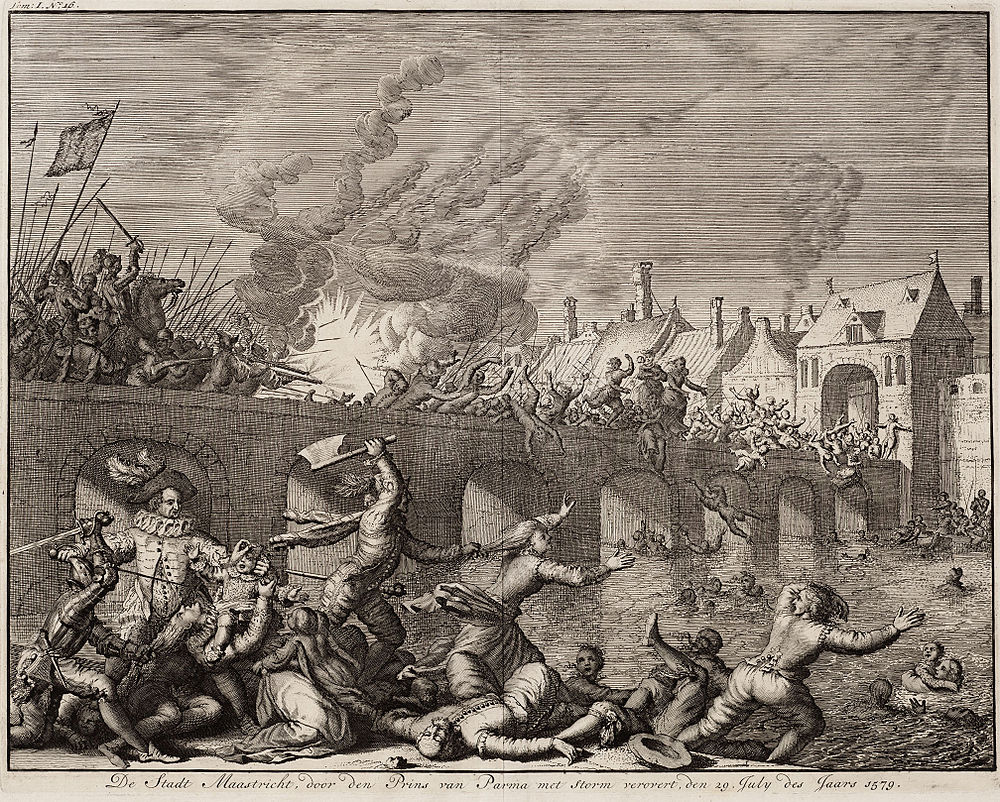Der folgende Text ist die Übersetzung einer Kurzfassung von „The Race’s Gravest Crisis Is at Hand“, dem Schlußkapitel von William Pierce’ Geschichte der weißen Rasse, „Who We Are“, ursprünglich erschienen in National Vanguard (Mai 1978 bis Mai 1982):
 Seit dem Ende des Zweiten Weltkriegs haben sich die Lage und die Aussichten der Weißen Rasse sowohl moralisch als auch materiell verschlechtert.
Seit dem Ende des Zweiten Weltkriegs haben sich die Lage und die Aussichten der Weißen Rasse sowohl moralisch als auch materiell verschlechtert.
So schlecht der moralische Zustand der Rasse vor dem Krieg war, so unermesslich schlechter wurde er danach. Seit dem Dreißigjährigen Krieg hatten die Weißen einander nicht mehr mit einer solchen religiös motivierten Grausamkeit und in einem solchen Ausmaß umgebracht. Doch dieses Mal war der Aberglaube, mit dem all das Töten gerechtfertigt wurde, nicht so tief verwurzelt wie 300 Jahre zuvor.
Als die von Bombern gesäten Feuerstürme, die Hunderttausende von deutschen Frauen und Kindern in Dresden, Hamburg und einem Dutzend anderer Städte verbrannt hatten, sich ausgetobt hatten; als die letzte Massenerschießung von Kriegsgefangenen durch die Amerikaner vorüber war; als die Briten damit fertig waren, Hunderttausende von antikommunistischen Kroaten und Kosaken mit vorgehaltenem Bajonett an ihre kommunistischen Henker in Jugoslawien und der Sowjetunion auszuliefern; als die umherziehenden Vergewaltigerbanden im sowjetisch besetzten Berlin endlich gesättigt waren; als die Mordorgien in Paris und Prag und den anderen Hauptstädten des „befreiten“ Europas abgeklungen waren; als der Krieg und seine unmittelbaren, blutigen Nachwirkungen vorbei waren und die Weißen in Amerika und Großbritannien Gelegenheit hatten, ihr Werk zu begutachten und darüber nachzudenken, kamen die ersten Zweifel.
Einer der Hauptverantwortlichen für die Katastrophe, der britische Premierminister Winston Churchill, brachte diese Zweifel unverblümter und prägnanter als alle anderen zum Ausdruck. Als er in einem seiner seltenen Momente der Nüchternheit über die problematische Zukunft Großbritanniens in einem Nachkriegseuropa nachdachte, das von dem neu entstandenen sowjetischen Koloss überschattet wurde, platzte er heraus: „Wir haben das falsche Schwein geschlachtet.“ Dies war derselbe Churchill, der einige Monate zuvor in einem weniger nüchternen Moment seine Verachtung für das besiegte Deutschland dadurch symbolisch zum Ausdruck gebracht hatte, dass er in Anwesenheit einer Gruppe von Journalisten ostentativ in den Rhein urinierte.
Viele der westlichen Staats- und Regierungschefs, die in den Krieg verwickelt waren, hatten nicht mehr moralische Gewissensbisse oder Verantwortungsgefühl für das, was sie getan hatten, als Churchill. Ihr Geschrei über „deutsche Kriegsverbrechen“ war oft das wirksamste Mittel, um von ihren eigenen Verbrechen und den Verbrechen anderer abzulenken.
Die Einzelheiten der Geschichte der Nachkriegszeit waren in Großbritannien, Amerika, Frankreich und den anderen westlichen Nationen unterschiedlich, aber die allgemeinen Trends waren überall gleich. Die folgenden Abschnitte beziehen sich speziell auf die Vereinigten Staaten, aber die Schlussfolgerungen, zu denen sie führen, gelten für den Westen im Allgemeinen.
* * *
Bürgerrechte. Und dann, bevor irgendjemand sein Gleichgewicht finden und herausfinden konnte, was es bedeutet und wohin es führen würde, brach das Phänomen der „Bürgerrechte“ über das Nachkriegsamerika herein. Was vor dem Krieg unmöglich gewesen wäre, nahm in den späten 1940er Jahren Fahrt auf und zog in den folgenden zwei Jahrzehnten alle mit sich. Als sich der Rauch in den späten 1960er Jahren zu lichten begann, stellten die weißen Amerikaner fest, dass sie sich selbst um ihr kostbarstes und grundlegendes Bürgerrecht betrogen hatten: das Recht auf freie Vereinigung.
Sie konnten sich ihre Nachbarn nicht mehr aussuchen und vernünftige Maßnahmen ergreifen, um sicherzustellen, dass sich die rassische Zusammensetzung der Gemeinden, in denen sie lebten, nicht verschlechterte; jeder Versuch, dies zu tun, war illegal geworden und wurde mit einer Haftstrafe in einem Bundesgefängnis geahndet.
Sie konnten ihre Kinder nicht mehr in Schulen schicken, die sie mit ihren eigenen Steuern finanzierten und die von Kindern ihrer eigenen Rasse besucht wurden.
Diejenigen von ihnen, die Arbeitgeber waren, konnten keine Männer und Frauen ihrer Wahl mehr einstellen.
Jeder Ort und jede soziale Gruppierung, in der die weißen Männer und Frauen Amerikas frei mit ihresgleichen verkehren konnten – Wohnviertel und Arbeitsplätze, Schulen und Erholungsgebiete, Restaurants und Kinos, Militäreinheiten und städtische Polizeikräfte –, stand nun auch Nicht-Weißen offen, und letztere zögerten nicht lange und verschafften sich dort einen Stand.
Multirassische Pseudo-Nation. Was in der erstaunlich kurzen Zeit von etwas mehr als zwei Jahrzehnten erreicht worden war, war die Umwandlung des stärksten, reichsten und fortschrittlichsten Landes der Erde von einer Weißen Nation, in der rassische Minderheitengruppen von jeder nennenswerten Teilhabe an der Weißen Gesellschaft – außer als Arbeitskräfte – faktisch ausgeschlossen waren, in eine multirassische Pseudonation, in der Nichtweiße nicht nur teilnahmen, sondern eine privilegierte und verwöhnte Elite bildeten.
Das Ausmaß der Transformation ist vielen Weißen, die nach ihrem Beginn geboren wurden, nicht bewusst, aber es lässt sich leicht nachvollziehen, wenn man sich die kulturellen Zeugnisse der früheren Ära ansieht. Ein Vergleich von Zeitschriftenanzeigen oder fotografierten Straßenszenen, von populärer Belletristik oder Grundschullehrbüchern, von Kinofilmen oder Gesichtern in Highschool-Jahrbüchern von 1940 mit denen des letzten Jahrzehnts zeigt die Geschichte in aller Deutlichkeit.
Diese radikale Enteignung weißer Amerikaner wurde nicht nur im Namen von „Gerechtigkeit“ und „Freiheit“ durchgeführt, sondern es wurde dabei auch kaum ein Schuss abgegeben: Insgesamt fielen nicht mehr als ein Dutzend Weiße bei dem schwachen und völlig wirkungslosen Widerstand, der dagegen geleistet wurde. Mehr als alles andere zeigt dieser Mangel an Widerstand den moralischen Zustand der Rasse in der Nachkriegszeit.
Es stimmt natürlich, dass die Juden, die die Enteignung planten und einen großen Anteil daran hatten, sich gut vorbereitet hatten. Wenige Jahre vor dem Krieg befanden sich noch große Teile der amerikanischen Nachrichten- und Unterhaltungsmedien in den Händen von rassisch bewussten Weißen. Große Verlage veröffentlichten in den 1920er und 1930er Jahren Bücher, die sich offen mit Eugenik, Rassenunterschieden und dem Judenproblem auseinandersetzten. Henry Ford, Amerikas führender Industrieller, schenkte in den 1920er Jahren den Käufern seiner Automobile eine Zeit lang ein Freiexemplar von The International Jew, einem stark antijüdischen Buch, das zuvor in seiner Zeitung The Dearborn Independent erschienen war.
In den 1930er Jahren sprach sich Pater Charles Coughlan, ein unabhängiger katholischer Priester mit einer Radiosendung, die von Millionen gehört wurde, entschieden gegen jüdische politische Intrigen aus, bis er durch eine Anordnung des Vatikans zum Schweigen gebracht wurde.
Doch gegen Ende des Krieges hatten die Juden die Medien so fest im Griff, dass abweichende Meinungen gegen ihre Politik in der Öffentlichkeit kein Gehör fanden. Keine große Zeitung, keine Filmgesellschaft, kein Radiosender und keine populäre Zeitschrift war mehr in den Händen ihrer Gegner.
Einige Institutionen, vor allem die christlichen Kirchen, trugen die Saat der Rassenvernichtung bereits in sich und brauchten relativ wenig Aufwand, um sie mit den jüdischen Plänen in Einklang zu bringen. Andere (die Ford Foundation ist ein eindrucksvolles Beispiel) wurden infiltriert, übernommen und in eine Richtung gelenkt, die der von ihren Gründern beabsichtigten diametral entgegengesetzt war.
Eine tiefgehende moralische Krankheit. Letztlich ändert jedoch nichts von alledem etwas an der Tatsache, dass die weiße Bevölkerung der westlichen Nationen in der Nachkriegszeit moralisch zutiefst krank ist. Es handelt sich um eine Krankheit, die tief in der Vergangenheit wurzelt, wie in früheren Beiträgen dargelegt wurde, aber im Amerika der Nachkriegszeit zur Blüte gelangte.
Es ist schwierig, das Hexengebräu zu analysieren und den einzelnen Zutaten genau die Schuld zuzuweisen. Es gab zum einen den Trend zu einer immer vulgäreren und unehrlicheren Demokratie, der schon lange vor dem Krieg einsetzte und mit dem Eintritt Franklin Roosevelts auf die nationale politische Bühne im Jahr 1932 einen neuen Höhepunkt erreichte.
Und es gab den Verlust der Verwurzelung und die damit einhergehende zunehmende Entfremdung, die sich aus der größeren Mobilität der motorisierten Bevölkerung ergab.
Schlussendlich war da das mächtige neue Propagandamedium Fernsehen mit seiner beängstigenden Fähigkeit, zu hypnotisieren und zu manipulieren.
Aber es war das unsagbar grausame Verbrechen des Krieges selbst und seine Auswirkungen auf diejenigen, die an ihm teilnahmen, das als Katalysator diente, der alle Elemente miteinander reagieren ließ und die Krankheit selbst metastasierte.
Der böse Geist der unmittelbaren Nachkriegszeit war damals nur für einige wenige besonders fühlsame Menschen erkennbar, während die meisten nicht unter den oberflächlichen Glitter von Veränderung und Bewegung sehen konnten.
Die gegenwärtige Bedrohung für das Überleben der Weißen Rasse ist sowohl physisch als auch moralisch: Während sich das zahlenmäßige Gleichgewicht der Rassen sowohl in der Welt als Ganzes als auch in den meisten ehemals Weißen Nationen der nördlichen Hemisphäre rasch von den Weißen zu den Nicht-Weißen verschiebt, nimmt die durchschnittliche rassische Qualität derer, die dem Weißen Lager angehören, ab.
Das weltweite Rassengleichgewicht hat sich von 30 Prozent Weißen im Jahr 1900 auf knapp 20 Prozent Weiße im Jahr 1982 verschoben. Bis zum Ende des nächsten Jahrzehnts wird die Welt weniger als 16 Prozent Weiße haben. Die Bevölkerungsexplosion in der südlichen Hemisphäre, die für diese Rassenverschiebung verantwortlich ist, ist weitgehend die Folge des Exports weißer Wissenschaft und Technologie, die die Sterblichkeitsraten in Afrika, Indien und anderen nicht-weißen Gebieten der Welt dramatisch gesenkt haben.
Die Rassenvermischung der Nachkriegszeit ging mit einer enormen Zunahme interrassischer Vermehrung einher. Vor dem Krieg waren Eheschließungen zwischen Weißen und Schwarzen in den Vereinigten Staaten gesellschaftlich nicht akzeptabel und in vielen Bundesstaaten sogar illegal. Die wenigen Mulattenkinder wurden fast immer von schwarzen Müttern geboren und blieben in der schwarzen Rassengruppe. Nach dem Krieg wurden durch eine unerbittliche Propaganda alle rechtlichen und die meisten sozialen Hindernisse für die Rassenvermischung beseitigt, und die zweite Generation von Mischlingskindern nähert sich nun dem Fortpflanzungsalter.
Grimmige Rekapitulation. Um die gegenwärtige Situation der Weißen Rasse zu rekapitulieren:
Die geografische Ausbreitung der Weißen, die in den letzten vier Jahrhunderten die Regel war, wurde im 20. Jahrhundert mit dem Ende des europäischen Kolonialismus nicht nur gestoppt, sondern in der Zeit nach dem Zweiten Weltkrieg umgekehrt.
Auf jeden Weißen, der auf dem Planeten lebt, kommen heute mehr als vier Nicht-Weiße, und das Verhältnis verschiebt sich immer schneller in Richtung eines noch größeren Übergewichts der Nicht-Weißen.
Die Prognosen sind ernst. Wenn sich die gegenwärtigen demografischen Trends noch ein halbes Jahrhundert lang unvermindert fortsetzen und wenn in dieser Zeit eine entschlossene und weitsichtige Minderheit von Menschen europäischer Abstammung keine nachhaltigen Anstrengungen unternimmt, um ein anderes Ergebnis zu erzielen, dann wird die Rasse, deren Geschichte wir in diesen 26 Teilen nachgezeichnet haben, das Ende ihrer langen Reise erreicht haben.
Sie mag noch ein weiteres Jahrhundert oder länger in isolierten Enklaven wie Island verweilen, und ihre charakteristischen Merkmale oder ihre Färbung werden im nächsten Jahrtausend mit abnehmender Häufigkeit bei Individuen wiederkehren, aber vor der Mitte des 21. Jahrhunderts wird der Punkt erreicht sein, von dem aus es kein Zurück mehr gibt.
Dann wird die Rasse, die den Ruhm Griechenlands und die Größe Roms begründete, die die Erde eroberte und ihre Herrschaft über alle anderen Rassen errichtete, die das Geheimnis des Atoms entschlüsselte und die Kraft nutzte, die die Sonne erhellt, die sich aus dem Griff der Schwerkraft befreite und nach neuen Welten ausgriff, in ewige Dunkelheit verschwinden.
Und die gegenwärtigen demographischen Trends werden sich fortsetzen, solange die politischen, religiösen und sozialen Konzepte und Werte, die derzeit das Denken der westlichen Völker und ihrer Führer umschreiben, weiterhin eine entscheidende Rolle spielen. Denn im Grunde ist es ein moralischer Defekt, der das Überleben der Rasse bedroht.
Wenn der Wille zum Überleben in den Weißen Massen vorhanden wäre und sie bereit wären, die notwendigen Maßnahmen zu ergreifen – was erfordern würde, dass sie gegen das Diktat der Religion handeln –, dann könnte die physische Bedrohung überwunden werden, mit Sicherheit und schnell. Die nicht-weiße Einwanderung könnte sofort und mit relativ geringem Aufwand gestoppt werden. Die Auswirkungen früherer nicht-weißer Einwanderung und der Rassenmischung rückgängig zu machen, wäre eine viel größere Aufgabe, die größere wirtschaftliche Anpassungen und zweifellos auch ein erhebliches Maß an Blutvergießen erfordern würde, aber es wäre eine Aufgabe, die durchaus im Rahmen der physischen Möglichkeiten der Weißen Mehrheit läge.
Diese Dinge könnten erreicht werden, selbst zu diesem späten Zeitpunkt. Und wenn sie erst einmal in einem großen Land vollbracht sind, könnten sie weltweit ausgedehnt werden, wenn auch vielleicht nicht ohne einen weiteren großen Krieg und die damit verbundenen Risiken. Aber natürlich werden sie nicht erreicht werden. Denn der Wille zum Überleben existiert nicht und er hat seit dem Ende des Zweiten Weltkriegs in der weißen Bevölkerung keiner Großmacht mehr existiert. Die letzte Chance der Rasse, ihre Probleme auf diese relativ schmerzlose Weise zu überwinden, starb im Januar 1943 in Stalingrad.
In den nächsten Jahrzehnten wird also unweigerlich viel verloren gehen. Das Gleichgewicht der Bevölkerung wird sich überall noch schneller zugunsten der Nicht-Weißen, der Mischlinge und der Untauglichen verschieben. Die Welt wird ärmer, hässlicher, lauter, überfüllter und schmutziger werden. Aberglaube, Entartung und Korruption werden allgegenwärtig sein, selbst unter den Weißen von gesunder Rasse, und ein Großteil bester Rasse wird durch Rassenmischung für immer verschwinden.
Und die Unterdrückung wird sicherlich überall zunehmen: Denjenigen, die für Qualität statt Quantität und für rassischen Fortschritt eintreten, wird im Namen von „Freiheit“ und „Gerechtigkeit“ das Recht auf Widerspruch und das Recht auf Selbstverteidigung verweigert werden.
Letzten Endes muss jedoch keiner dieser Verluste entscheidend oder gar bedeutsam sein, so beängstigend sie jetzt auch sein mögen und so schrecklich sie in den unmittelbar bevorstehenden dunklen Jahren auch sein mögen. Alles, was wirklich wichtig ist, ist, dass ein Teil der Rasse überlebt, sich körperlich und geistig reinerhält, sich weiter fortpflanzt und schließlich über diejenigen siegt, die ihre Existenz bedrohen, selbst wenn dies tausend Jahre dauern sollte; und dieses Ergebnis sicherzustellen ist die dringende Aufgabe der rassisch bewussten Minderheit unseres Volkes in diesen gefährlichen Zeiten.
Einige Leitlinien. Eine detaillierte Ausarbeitung dieser Aufgabe würde den Rahmen dieser Serie sprengen, die, wie im Vorwort der ersten Folge erwähnt, lediglich dazu dient, den Lesern ein besseres Verständnis ihrer eigenen rassischen Identität zu vermitteln. Es mag jedoch angebracht sein, die Reihe Wer wir sind abzuschließen, indem wir die Lehren daraus ziehen, um einige sehr prägnante Leitlinien für die vor uns liegende Aufgabe aufzustellen:
1) Es ist eine Aufgabe für mindestens Jahrzehnte, wenn nicht Jahrhunderte. Geschichte zieht sich sehr zäh dahin; ein historischer Prozess von langer Dauer kann plötzlich in einem einzigen, katastrophalen Ereignis kulminieren, aber jede große Entwicklung in der Geschichte der Rasse hat tiefe Wurzeln und ist auf einem Boden gewachsen, der durch vorangegangene Entwicklungen gründlich vorbereitet wurde. Der Lauf der Geschichte ist jetzt, soweit es unsere Rasse betrifft, steil abwärts gerichtet, und seine Richtung zu ändern, wird nicht über Nacht geschehen, und dies wird auch nicht durch irgendwelche erfolgversprechenden Kinkerlitzchen erreicht werden, sondern es muss vorher ein Fundament für diesen Erfolg gelegt worden sein, Stein auf Stein, sorgfältig gesetzt.
2) Die Schaffenden, die diese Aufgabe übernehmen, werden nur eine winzige Minderheit der Rasse sein. Jedes Programm, das ein „Erwachen der Massen“ vorsieht oder sich auf die angeborene Weisheit der großen Masse unseres Volkes verlässt – also jedes populistische Programm – beruht auf einer falschen Vision und einem falschen Verständnis vom Wesen der Massen. In unserer langen Geschichte ist noch nie ein großer Schritt nach oben von der Masse der Bevölkerung vollzogen worden, sondern immer nur von einer außergewöhnlichen Person oder einigen wenigen außergewöhnlichen Individuen. Die Masse geht immer den Weg des geringsten Widerstandes, d. h. sie folgt immer der stärksten Fraktion. Es ist wichtig, mit den Massen zu arbeiten, sie zu informieren, sie zu beeinflussen, aus ihnen zu rekrutieren; aber man darf nicht auf ihre bestimmende, spontane Unterstützung zählen, bevor nicht eine kleine Minderheit aus eigener Kraft eine stärkere Kraft als jede gegnerische Gruppierung aufgebaut hat.
3) Die Aufgabe ist entsprechend ihrer Natur grundlegend, und sie wird nur durch einen grundlegenden Ansatz erfüllt werden können. Das heißt, dass diejenigen, die sich dieser Aufgabe widmen, einen reinen Geist und eine reine Seele haben müssen; sie müssen verstehen, dass ihr Ziel eine Gesellschaft ist, die auf ganz anderen Werten beruht als die, die der gegenwärtigen Gesellschaft zugrunde liegen, und sie müssen sich von ganzem Herzen und ohne Vorbehalt diesem Ziel verschreiben; sie müssen bereit sein, den ganzen Ballast an Fehlvorstellungen und das momentan gesellschaftlich Geschätzte hinter sich zu lassen. Es handelt sich also nicht um eine Aufgabe für Konservative oder Rechte, für „Gemäßigte“ oder Liberale oder für alle, deren Denken in den Irrtümern und der Korruption verhaftet ist, die uns auf den Abwärtskurs geführt haben, sondern es ist eine Aufgabe für diejenigen, die zu einem völlig neuen Bewusstsein der Welt fähig sind.
Die Aufgabe ist eine biologische, kulturelle und geistige, aber auch eine pädagogische und politische. Ihr Ziel hat nur in Bezug auf einen bestimmten Typus von Menschen einen Sinn, und wenn dieser Typus nicht erhalten werden kann, während die erzieherischen und politischen Aspekte der Aufgabe erfüllt werden, dann kann das Ziel nicht erreicht werden. Wenn die Aufgabe nicht in einer einzigen Generation erfüllt werden kann, muss es irgendwo ein soziales Milieu geben, das die mit dem Ziel verbundenen kulturellen und geistigen Werte widerspiegelt und verkörpert und dazu dient, diese Werte von einer Generation zur nächsten weiterzugeben. Die Erhaltung eines sozialen Milieus erfordert ebenso wie die Erhaltung eines Genpools ein gewisses Maß an Isolierung von fremden Elementen: je länger die Aufgabe dauert, desto höher ist das Maß. Dieses Erfordernis mag schwer zu erfüllen sein, aber es ist essentiell. Man sollte also eine Aufgabe ins Auge fassen, die sowohl einen internen, d. h. gemeinschaftsorientierten Aspekt als auch einen externen, d. h. politisch-pädagogischen Rekrutierungsaspekt hat. Mit dem Fortschreiten der Aufgabe und der Veränderung der äußeren und inneren Bedingungen wird sich zweifellos auch die Gewichtung der beiden Aspekte ändern.
* * *
Die hier gestellte Aufgabe ist gewaltig groß, und sie zu bewältigen wird einen größeren Willen, eine größere Intelligenz und eine größere Selbstlosigkeit erfordern, als sie unserer Rasse in irgendeiner früheren Krise abverlangt wurde. Die Gefahr, der wir uns jetzt gegenübersehen, sowohl durch den Feind innerhalb unserer Tore als auch durch den, der sich noch außerhalb befindet, ist größer als die, der wir uns durch die entrassten Römer im ersten Jahrhundert, die Hunnen im fünften Jahrhundert, die Mauren im achten Jahrhundert oder die Mongolen im 13. Jahrhundert gegenübersahen. Überwinden wir sie nicht, werden wir keine zweite Chance haben.
Bei all dem müssen wir uns klar machen, dass alle unsere Ressourcen im kommenden Kampf aus uns selbst kommen müssen; es wird keine Hilfe von außen geben, keine Wunder.
 As can be seen at the end of the last entry, Savitri’s admiration for Hitler was not as blind as that of those who never criticise the founder of the religion to which they belong. Dr Robert Morgan, who comments in The Unz Review, would be happy with Savitri’s pronouncement. But I differ from her.
As can be seen at the end of the last entry, Savitri’s admiration for Hitler was not as blind as that of those who never criticise the founder of the religion to which they belong. Dr Robert Morgan, who comments in The Unz Review, would be happy with Savitri’s pronouncement. But I differ from her.






 Seit dem Ende des Zweiten Weltkriegs haben sich die Lage und die Aussichten der Weißen Rasse sowohl moralisch als auch materiell verschlechtert.
Seit dem Ende des Zweiten Weltkriegs haben sich die Lage und die Aussichten der Weißen Rasse sowohl moralisch als auch materiell verschlechtert.